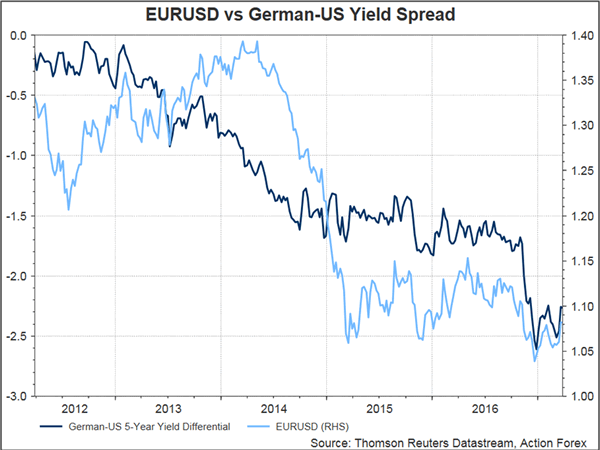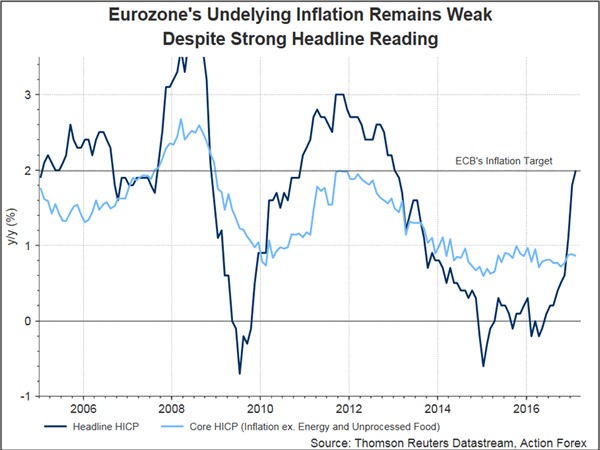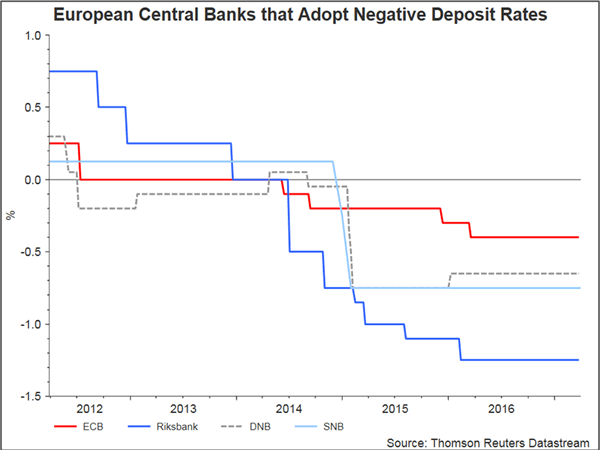Talks of ECB’s tapering have been looming of late, thanks to Eurozone’s improving economic developments, especially in Germany, adverse effects of negative deposit rates on financial institutions, bigger-than-expected targeted longer-term refinancing operations (TLTROSs) take-up last week, as well as the asset buying program’s ongoing deviation from its capital key. Bundesbank president Jens Weidmann has been vocal about less expansionary policy and a review to the forward guidance, while other members of the Governor Council reiterated the need to maintain accommodative measures to boost inflation.
No change to ECB policy throughout the year
We expect ECB’s monetary policy and QE measures to stay the same throughout the year. That is, ECB should keep the main refi rate, marginal lending rate and the depo rate 0%, 0.25% and -0.40%, respectively. Meanwhile, the central bank would continue the asset purchase program at the pace of 80B euro per month until the end of this month and then continue the program at a pace of 60B euro per month from April 2017 until the end of December 2017, or beyond, if necessary. QE tapering would likely begin in early 2018 and end by the first half of the year. ECB might begin raising the depo rate in 2Q18.


Some hawkish comments recently
Austrian central bank president Ewald Nowotny sent quite hawkish comments earlier this month, suggesting that ECB would decide only whether to raise rates or end QE first. He added that "the structure of the interest rates does not always need to remain constant… The ECB could also raise the deposit rate earlier than the prime rate", whilst affirming that the forward guidance that bond purchases would continue until the end of the year would be maintained.
Separately, Bundesbank president Jens Weidmann noted on Monday that he would like to see a "less expansive stance". Weidmann a week ago raised the question "whether the ECB council should slowly start considering an exit from the very easy policy and make its communication somewhat more symmetric". By contrast, Belgian central bank governor Jan Smets saw no urgency "to revisit what we have decided". As he noted in a Reuters interview, the "forward guidance is clear and we have to stick to that" and "if other views have been expressed on this issue, they are reflecting a minority position. Our decision is clear and I would like to stick to that steady hand approach".
However, ECB’s chief economist Peter Praet reiterated that "a very substantial degree of monetary accommodation is still needed for underlying inflation pressures to build up and support headline inflation in the medium term remains valid".
Eurozone underlying inflation stays weak
Markit’s PMI data signaled that Eurozone’s GDP growth might accelerate in 1Q17, from +0.4% in both 3Q16 and 4Q16. Moreover, expansion should be broadly based, spanning across manufacturing and services activities. Region-wide inflation accelerated to +2% y/y in February, exceeding ECB’s target of "close to, but below, +2%" for the first time since 2013. However, core inflation, excluding energy and seasonal food products, at +0.9% for the month, has stayed below +1% since 2014.

Germany showed solid improvements
Inflation in Germany outperformed. Headline HICP soared to +2.2% y/y, highest in more than 4 years, in February, from +1.9% a month ago. The report triggered Weidmann to call for ECB’s upgrade of inflation forecasts (current HICP forecasts: +1.3% for 2017, +1.5% for 2018 and +1.7% for 2019). Separately, IFO’s confidence indices for the country rose across all aspects in March. The business climate index added +1.3 points to 112.3 while the expectations index gained +1.7 points to 105.7. Moreover, the current assessment index added +0.9 point to 119.3. All indices came in better than market expectation. Germany’s GDP expanded +1.9% last year, compared with US’ growth of +1.6%.


But peripherals still suffering
However, the improvement mainly concentrated in core economies, in particular Germany, while most peripheral economies continued to suffer. For instance, annual inflation rate in Ireland came in at +0.3%, Malta at +1.2% and Slovakia at +1.3%. France, being the second largest economy in the Eurozone, registered an annual HICP at +1.4% for the month. Continuous pleasant surprises in both soft and hard data might give ECB more confidence in considering QE tapering and/or rate hike. Meanwhile, German officials would from time to time pressure the central bank to move in such direction.
Bigger-than-expected TLTROSs take-up
Last week, over 400 banks took up 233.5B euro of 4-year loans in the fourth and the final allotment of TLTROS, a program that allows Eurozone commercial banks to borrow money from the ECB at very favorable rates, almost doubled consensus of 125B euro. This resulted in rising ECB’s balance sheet by a significant amount, mimicking the effects of QE.
Separately, some technical constraints have made it challenging for QE to extend beyond this year. The central bank would find it difficult to continue the program without significantly exceeding the capital key limits (% of the total ECB capital determines its monthly purchase). Besides, tapering, some Eurozone stakeholders have been talking about raising the deposit rate, which currently stays at -0.4%. Some have suggested hiking interest rates before tapering. It is true that negative deposit rate is squeezing banks’ profit margins because they can’t generally pass the cost to their customers.
No tapering until 2018
Although upbeat growth outlook and technical constraints signal that the ECB might need to consider QE tapering, we expect the actual implementation would not begin until 2018. As we mentioned above, underlying inflation pressure has remained subdue, suggesting that the region has not yet achieved a self-sustained inflation rate. Meanwhile, the unemployment rate remains elevated despite decline from record highs. Wage growth pressure remains weak with ECB’s indicator of pay settlements easing to 1.4% in 4Q16 from 1.5% in the prior quarter while nominal unit labor costs rising merely 1% last quarter. However, the improved economic outlook and technical constraints facing ECB in adopting QE are inevitably triggering ECB to consider tapering. We expect tapering to begin in early 2018 and end by 1H18. Meanwhile, ECB might begin raising the depo rate in 2Q18. That means we do not rule out the possibility of a rate hike before QE ends.














